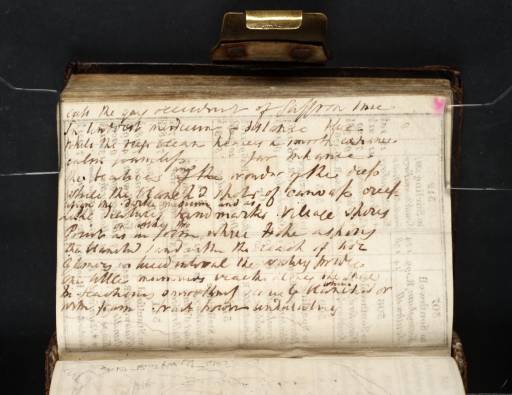References
How to cite
Matthew Imms, ‘Inscription by Turner: Draft of Poetry; with Sketch of Lynmouth and Lynton 1811 by Joseph Mallord William Turner’, catalogue entry, June 2011, in David Blayney Brown (ed.), J.M.W. Turner: Sketchbooks, Drawings and Watercolours, Tate Research Publication, December 2012, https://www

